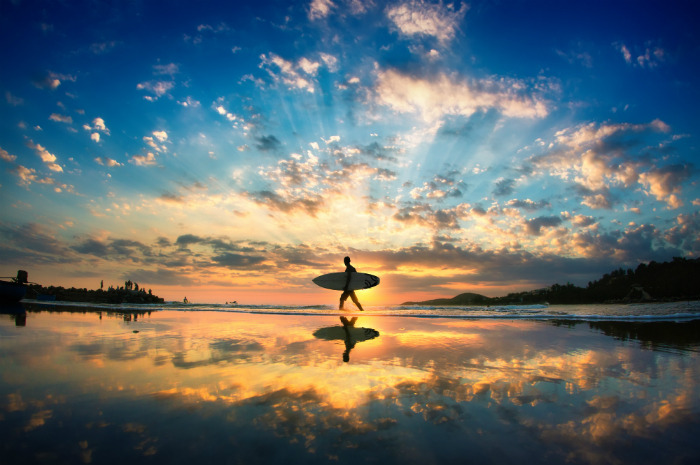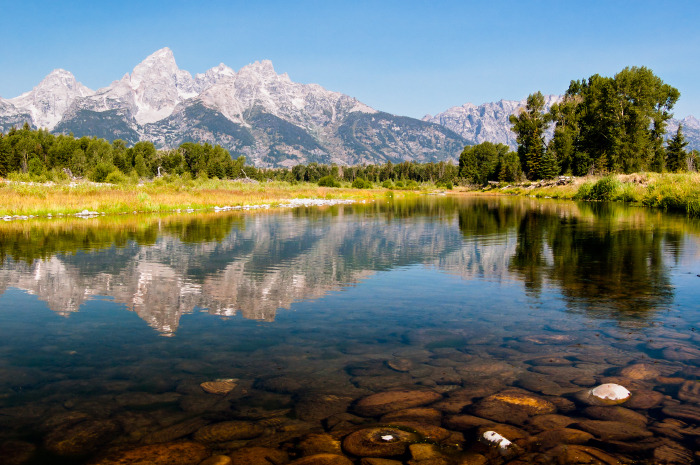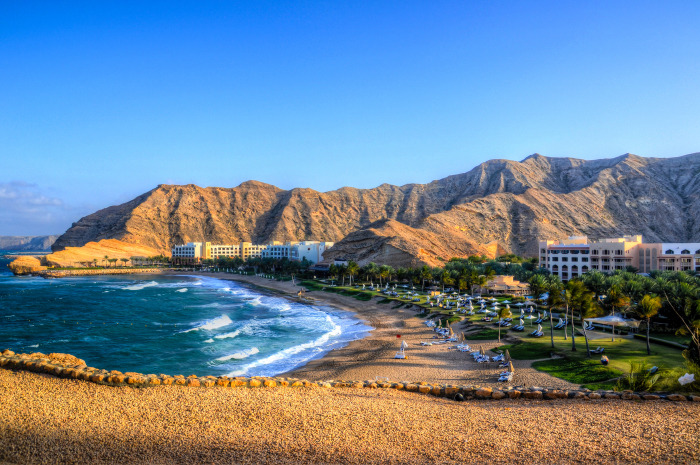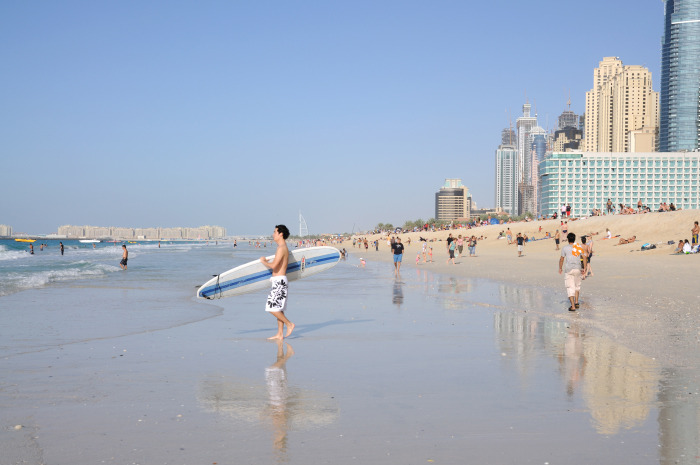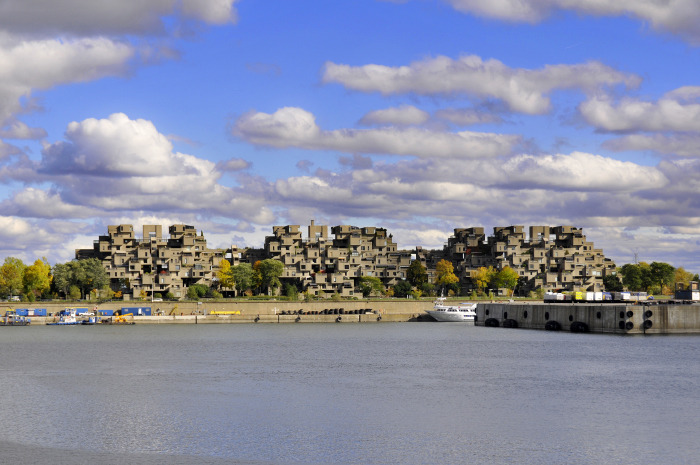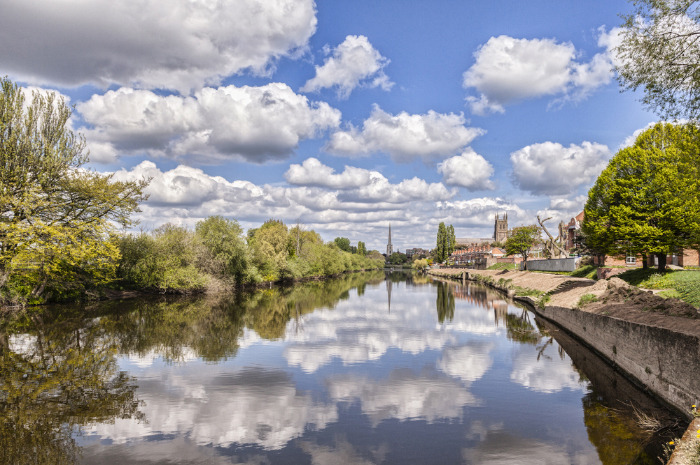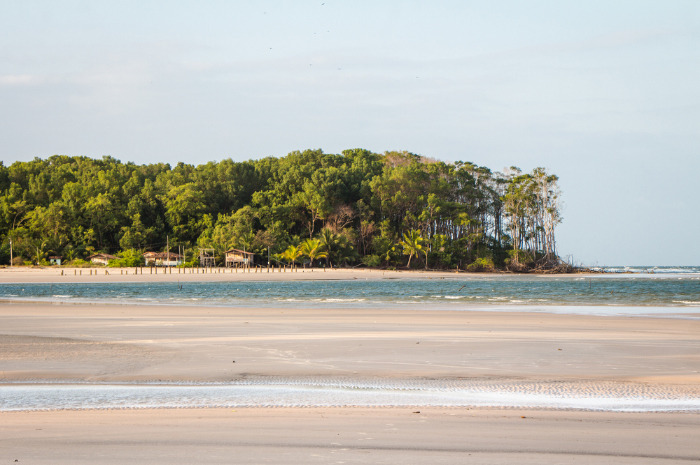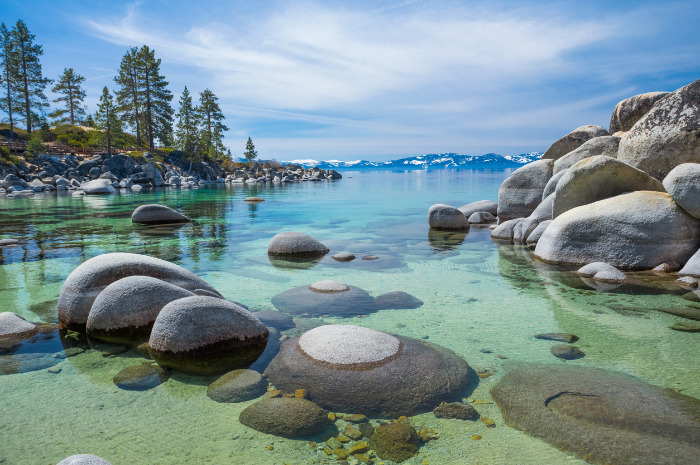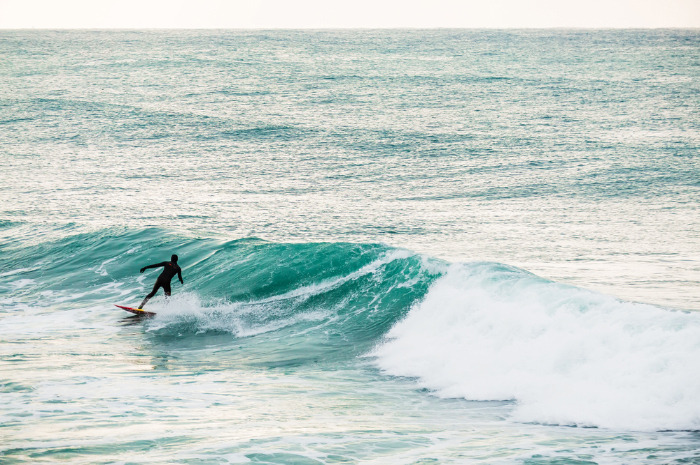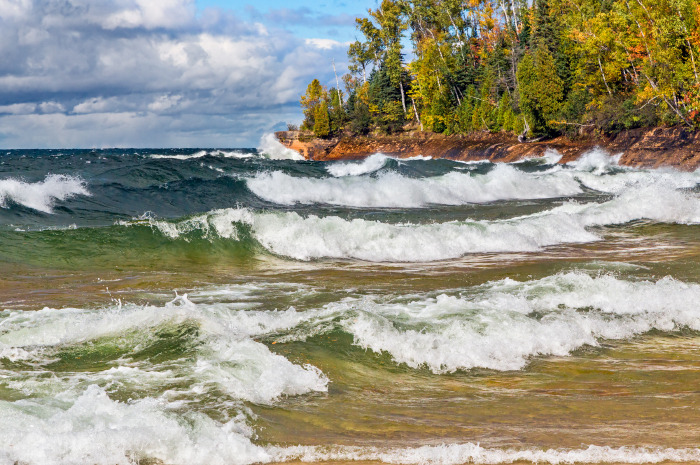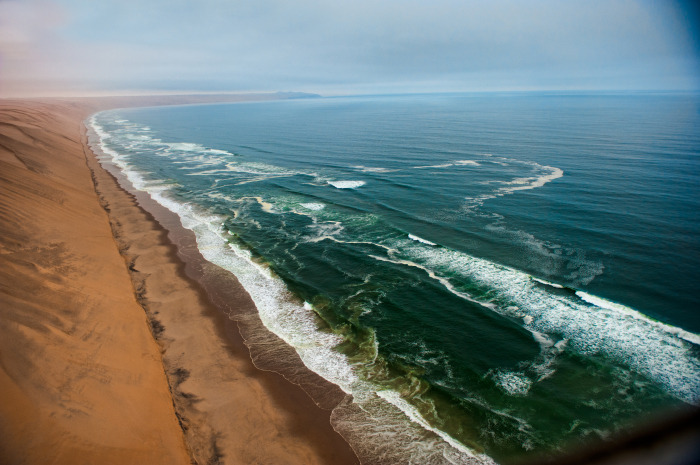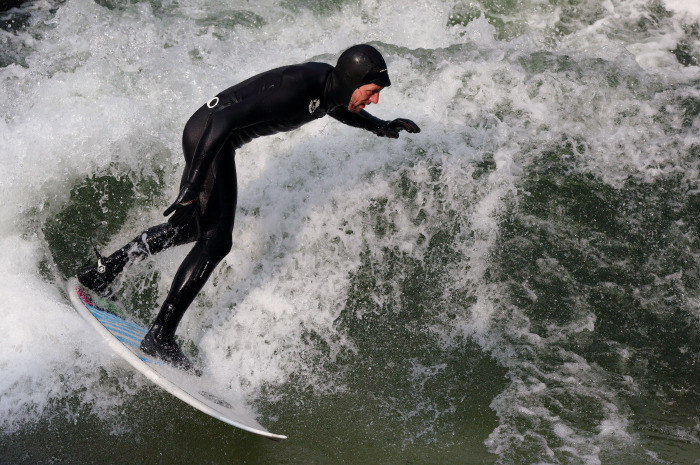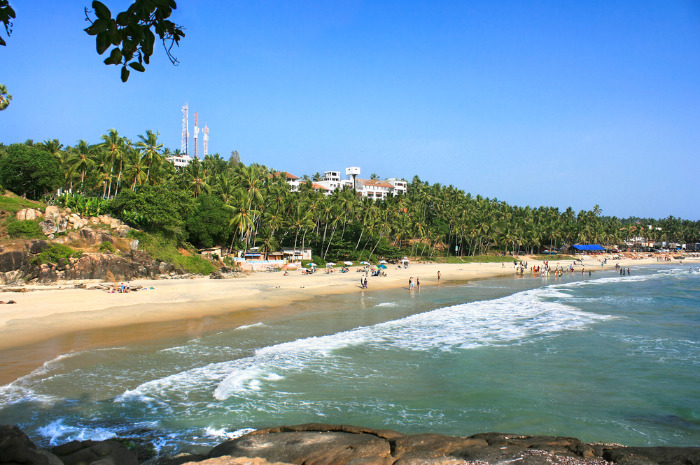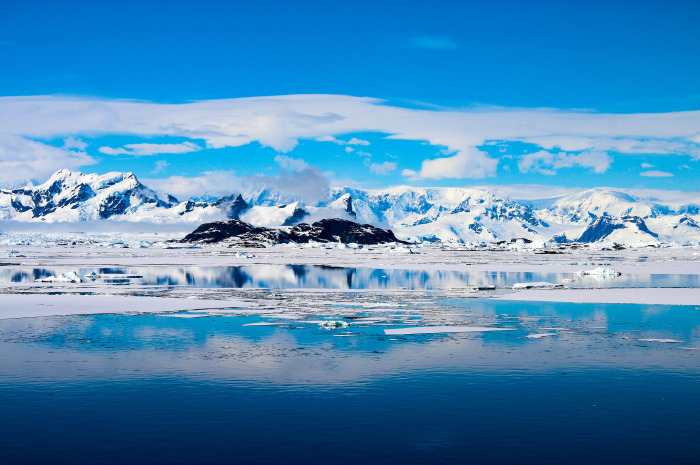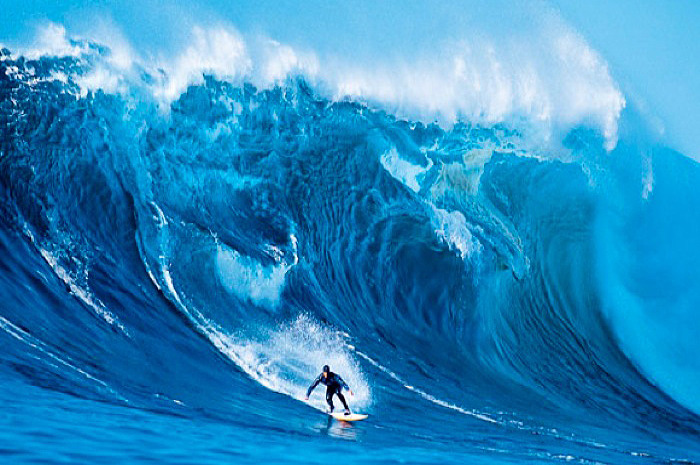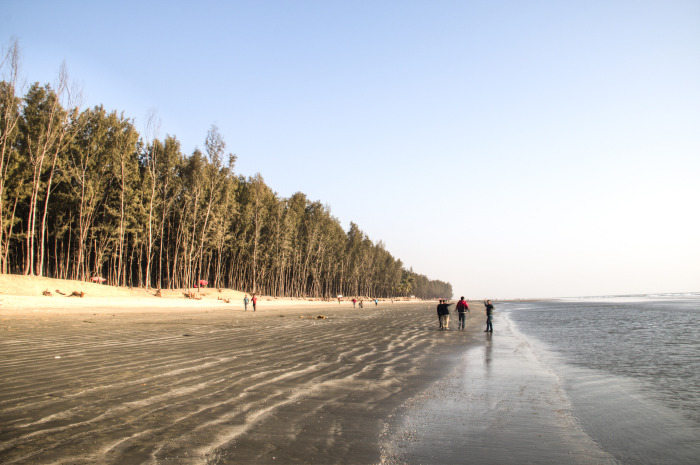15 Of The World's Most Surprising Surf Spots
There's a kernel of truth to the stereotype that surfing is a sport for the sun-drenched shores of California or Australia, but it has become a worldwide phenomenon, showing up in such diverse places as India and Oman.
Jackson Hole, Wyoming
Jackson Hole is famous for having access to two incredible national parks, world-class skiing, miles of mountain biking trails, and whitewater rafting. Surfing doesn't come to mind right away but it should. The same class 3 rapids that send rafters barreling down the Snake River during spring runoff are also home to the "Lunch Counter," a standing wave that has attracted surfers since the 1970s.
Oman
Look beyond the news of unrest in the Middle East and you will a find a few unexplored surfing gems. The long stretch of the coast along Oman has ideal conditions for big and long breaks. Joe's Point is the place to go. Temperatures stay around 80-85 degrees. See some of the area's amazingly well-preserved castles and forts and enjoy some of the best food in the country.
Dubai, U.A.E.
A wave doesn't even need to exist in nature to be a draw. While it's no stretch to imagine surfers paddling out into the Persian Gulf (and they do), this ritzy Arab Emirate also sports one of the world's most advanced wave pools—and it's in the middle of the desert, to boot. Wadi Adventure, which also has a whitewater kayaking course, has adjustable waves that reach up to 10 feet high.
Habitat 67, Montreal, Canada
The wave here doesn't move. River surfing is on a stationary wave which is a type of river rapid that is formed by a depression in the bottom of the river, and enough current to support a large wave face, according to Surf Montreal. The wave almost never ends, meaning you can catch it, and providing nobody else is waiting, you can surf it, technically, for days, non-stop.
The Severn River, England
The longest river in the U.K. is also home to a rare natural phenomenon. It's one of only 60 or so estuaries in the world that has a tidal bore—a series of waves produced by high tide rapidly funneling up a river's mouth. These waves reach over six feet tall in the spring and can travel for miles upstream, carrying surfers with them. A local surfing culture has sprung up around the river as a result, including the likes of unofficial world-record holder Steve King, who once reportedly rode a Severn wave for 7.6 miles through the English countryside.
Pororoca, Brazil
You can ride a nearly endless wave, called the pororoca, in Brazil. It is an example of a tidal bore. Tidal bores happen in places where high tides push sea water into narrow spaces like the mouths of rivers. The tide rushes in in a single, tumultuous wave. The Amazon bore happens at particularly high tides year round, and it's especially big around the spring equinox.
Lake Tahoe
The Sierra Nevadas aren't just for skiing. A growing number of adventure junkies have recognized the potential for surfing Tahoe's chilly, crystal clear waters when fall storms blow in. It's all possible thanks to high winds kicking up huge waves—for Lake Tahoe, anyway. This is different than coastal surfing – the water is very cold and the waves are more inconsistent.
Iceland
If you don't mind donning some thick neoprene and braving near-freezing temperatures, you'll have your pick of uncrowded breaks along the rugged shore of Iceland's Reykjanes Peninsula, just southwest of Reykjavik. And, because the peninsula is so exposed to the North Atlantic, it gets swell from all directions all year long, according to Transworld Surf magazine.
The Great Lakes
Surfing isn't just a saltwater sport, or a warm-weather one either. The "third coast" can be surfed all year, but prime time is winter. The same wind that forebodes brutal winter storms on Lakes Michigan and Superior also creates waves up to 30 feet high. Sheboygan, Wisconsin, in particular, became something of a surfing capital by hosting the Dairyland Surf Classic (1988-2012).
Skeleton Coast, Namibia
This is a difficult spot to reach, but it's worth the effort because of the consistent swell in areas like Swakopmund, Walvis Bay and the town of Luderitz. Skeleton Coast has been growing in popularity as a surfing spot, so restrictions on access points were placed to preserve it. Skeleton Bay has been known to produce some of the longest, deepest tubes in the world.
Munich, Germany
Munich is sometimes referred to as the mecca of river surfing. Surfers love the English Garden park because of the Eisbachwelle, as the wave is known, on the Eisbach River. This is the country's premier surfing destination. The so called standing wave, which can reach 6.5 feet, is not for beginners; the flow rate is about 20 tons per second.
Kovalam, India
Although India has 4,700 miles of coastline, the country's fledgling surf culture is only now finding its legs. Kovalam Surf Club, India's first organized surfing group headquartered in the coastal region of Kerala, was founded in 2005 by an NGO as a way to entice poor children to stay in school. The club's success, along with the construction of an artificial reef 150 meters off of Lighthouse Beach, has made this city India's surf central.
Antarctica
If you enjoy surfing and can handle rough weather conditions, Heard Island is the place for you. However, the sea can get dangerously cold. Until recently, the only surf trip to Antarctica was in 2000. Famous big-wave surfer Ramon Navarro embarked on the adventure of surfing in one of the coldest places on Earth. He said the potential for big-wave surfing is huge. One thing is certain: Crowds won't even be an issue.
Cortes Bank, California
Not all surf spots are in sight of shore. Cortes Bank is an underwater island 105 miles off the coast of San Diego. The highest point is Bishop Rock, which sits just three feet underwater at low tide. The unique topography of this area causes waves to reach heights of 80 feet or more, attracting big wave surfers from all over the world who arrive to Cortes Bank by boat.
Cox’s Bazar, Bangladesh
Bangladesh may the surfing surprise of the last few years. The country is usually associated with horrible traffic jams, cycle rickshaws, polluted air, and tigers. Cox's Bazar is one of the few, if not the only one, surf town in the region.
